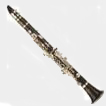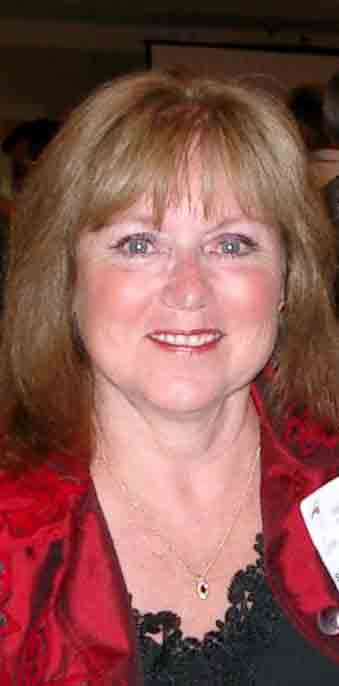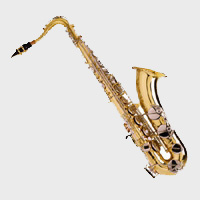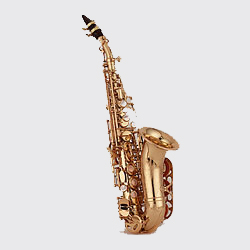





"Clarinet - A Brief History"
The
Old Clarinet of 1700 to 1825
This instrument was invented by
the clever JC Denner, which since 1690 produced a sophisticated blowtorch of cylindrical
borer (later multicylinder), characteristic physique constituting the base even single
acoustic properties of this instrument.
This characteristic opposes it to
the other wind instruments with keys to which one assimilates it sometimes, in particular
the oboe, the bassoon and the saxophone (invented about 1841), all of conical borer.
Because of this singular borer, the clarinet, although it is in fact a "open pipe
cylindrical", sounds like a "stopped pipe", therefore with the lower
octave, until serious D, compared to the oboe or the flute, and, in addition, to be
strictly accurate does not produce octaves, but twelfths, i.e. when one actuates with the
left inch this key known as of octave on the oboe or the saxophone, one obtains with the
clarinet the twelfth. Example: if one stops all the holes of the two hands to obtain the
serious ground, one passes to acute D by pressure of the key of inch or key of twelfth. It
is the greatest difficulty at the time of the training of the instrument, but it is also
the price to pay to fall under the charm from "clear and clear" sonority from
the clarinet...
The "its charmer" of
this instrument will allure all the significant type-setters of the XVIII century at
our days, and in particular Mozart who will offer his more beautiful pages to him: K622
concerto ("the "concerto... often used nowadays to illustrate some unforgettable
images in the current cinema: "Out of Africa", "the Tree with the
shoes", "A Boils of Breath" etc, the Quintet, the Trio of the Skittles,
without speaking about the features and soli about splendid orchestras heard in the operas
and various symphonies. The other type-setters, Italians or Germans will not be remains
about it with Rossini, Vivaldi, Puccini, Verdi, Stammitz, Molter, Spohr, Strauss, Weber,
Brahms, Schumann and Beethoven which will write so many pages for this instrument. Later
on, the clarinet will be appreciated of the French, Europeans and the Americans such as:
Debussy, Ravel, Berlioz, then others more recent: Milhaud, Poulenc, Stravinsky, Bartok,
Nielsen, Françaix, Messiaen, Swell, Bernstein, Carigliano, Copland, etc.
The evolution and the development
which the clarinet knows as of the medium of the XIX 2nd at our days are also due to the
genius of some men who knew, either by their technical aptitude to improve the instrument,
or by their virtuosity to play, inspire to the type-setters increasingly difficult parts
of them, thus leading the factors to improve the mechanism unceasingly, the emission and
the accuracy of this instrument.
The modern clarinet of 1825 to
1950
About 1825, a great number of
manufacturers propose their clarinets on the European market. Several types of mechanisms
are côtoient, in particular the Muller system with thirteen keys, the German system, the
Albert system (still snuffed clarinetists of traditional jazz), the system Roméro, etc.
In 1839, the factor Louis Auguste Buffet had bound of friendship with the virtuoso
Hyacinthe-Eléonor Klosé (author of the famous method), him even lately appointed
Professor of the National Academy. The collaboration of the two men will lead to the first
clarinet "system Boehm", adaptation of the modern mechanism invented little time
before by the German Théobald Boehm for the flute. Very quickly this type of clétage
will achieve the unanimity (except rather curiously in the countries of German language
even) and will become the almost universal system of second half of the XX century.
Parallel to the evolution of the
clarinet sib, "the large clarinet", one improves that in, the very significant
one for the interpretation of Mozart, Schumann and Brahms. The manufacturers also improve
the other parents of the family: "small" clarinet in MIB or D, basset horn in F
and low clarinets in sib, as well as the double basses in MIB. One of the most famous
specialist on the matter is not other than the Leblanc factor, always very appreciated.
Succeeding Klosé, eminent
soloists like Rose then Henri Lefebvre, will take part in the improvement of the clarinet
by testing the instruments leaving factory. From 1910 competition becomes sharp with the
arrival of the instruments of Henri Selmer, clarinettist with the Republican Guard, and of
its brother Alexandre, soloist in Boston, Cincinnatti and New York. At that time the
French instrumental invoice is in full expansion with Evette & Schaeffer/Buffet
Crampon on the one hand, Couesnon of the other, without forgetting many the other factors:
Leblanc, Robert, Thibouville, etc...
After the First World War, the
manufacturers progress unceasingly, so much on the level of the accuracy (all the more
perilous mission as the tuning fork go up unceasingly under the pressure of the violinists
and other "cords" of the orchestra which wish to play more "shining",
thus passing from the 435 to the 442 to see 445), that on the level of sonority and the
mechanical facility, requirements of the work of increasing orchestra.
The contemporary clarinet of 1945
to 2000
As of the end of the second world
war, exports of French clarinets will develop towards the U.S.A, the Americans becoming
very fond of delicacies French products discovered during the Release. At that time, with
the development of the jazz, from many musicians of which most famous is without question
Benny Goodman, (excel ambassador of the Selmer clarinet), but also Mezz Mezzrow, Artie
Shaw, Buddy de Franco and well of others, also will push the factors with becoming
increasingly powerful. The large American traditional Masters, enthusiastic admirateurs of
the French school, whose principal actors are Louis Cahuzac, Switzerland Daniel Bonade,
Gaston Hamelin, then the two virtuosos Ulysses Delécluse and Jacques Lancelot, will make
the reputation of the school and the French instrumental invoice, while collaborating very
actively in the improvement of the clarinets Selmer and Buffet Cramp since 1950.
These two musicians will know
parallel destinies and will contribute in an admirable way to blooming of the French music
for the clarinet. Ulysses Delécluse between with the Republican Guard before even its
majority thanks to a special exemption. It will be named professor of the National Academy
of Paris, posts where it will be maintained until 1980. Numbers its alumni still occupied
or occupy of the key post offices of professors or soloists of orchestra in various
symphonic or military formations such as: Marcel Allain, Michel Arrignon, Etienne Bardon,
Andre and Pierre Baker, Norbert Bumblebee, Pierre Clement, Guy and Serge Dangain, Alain
Damiens, Jacques Di Donato, Yves Didier, Robert Fountain, Maurice Gabai, Michel Lethiec,
Joseph Marchi, Jacques Médous, Jacques Milon, or Ferdinand Sansalonne.
Themselves will form in their turn
of many pupils of which some will follow the teaching of Guy Deplus, clarinet solo of the
Opera and successor of Ulysses Delécluse with the CNSM and will often make remarkable
careers like: Paul Apélian, soloist Orchestrates of Montpellier and concert performer,
Philippe Cuper concert performer, super-solistede the Opera of Paris, professor at the CNR
of Versailles, Olivier Dartevelle, soloist of Radio operator Luxembourg, professor at the
CNR of Nancy, Bruno Martinez, concert performer and clarinet-low solo of the Opera of
Paris, Paul Meyer concert performer, Pascal Moraguès concert performer, super soloist
with the Orchestra of Paris, professor to the CNSM of Paris, Richard. Rimbert concert
performer, soloist with the National Orchestra and the CNR of Bordeaux, etc...
However, at the time of
Delécluse, the French school (a little too marked by the side shining, even foil of the
sonority imposed by the academic rigour of the Master), would have been likely to see its
prestige decreasing with the eyes of the world (especially with the U.S.A.) without the
arrival on the musical scene of that which will be during more than forty years an
incomparable ambassador for the French clarinet and its most prestigious factor: Dresser
Cramp. Indeed, in 1951 the historical meeting between Robert Carrée, directing technical
takes place and brilliant acoustics expert and Jacques Lancelot, virtuoso remarkable who
made known himself within various orchestras and which will teach during more than thirty
years to the National Academy of Rouen and the C.N.S.M. of Lyon.
Noticed by Pierre Lefebvre, tester
in title of the company Dresser, Jacques Lancelot who very often occurs on scene with the
French Wind quintet (at the sides of Rampal, Pierlot, Hongne, Barboteu) or the Lamoureux
orchestra, will collaborate in an assiduous and permanent way in work of Robert Carrée.
In addition its unforgettable recordings at Erato or Philips, its admirable
interpretations of the concertos of Mozart, Weber, Françaix and many the other recordings
at the sides of personalities like Lily Laskine and under the rod of prestigious heads,
will be extraordinary advisabilities to try out and check the progression of the
improvements made to the clarinets.
A pleiad of new models appear
between 1951 and 1975: R13 (which will be used to work out the Festival and Vintage
between 1985 and 1999), first clarinet with multicylinder borer, which will be a success
without precedent with the U.S.A and in the Anglo-Saxon countries. This instrument has
also the characteristic to be granted to the 440 because of its specific length. To obtain
this result, Robert Carrée was with the listening of the councils and critical large
American Masters, of which one of most effective is fantastic David Weber who started with
officer under the rod of Toscanini in the middle of the Thirties. This extraordinary
musician, originating in Vilnius (Lithuania) started very early to study the clarinet
after his/her parents emigrated towards the U.S.A. Very influenced by the French school
(especially Cahuzac) and by its Master Daniel Bonade, it is pointed out by its virtuosity
with small clarinet MIB within the orchestra of the N.B.C, then of Metropolitan Opéra.
Become a soloist recognized in the U.S.A., it will play within the New York Philharmonic,
then of the New York City Ballet (Ballanchine Ballet). Appointed professor in Juilliard
Art School, it will form a great number of talented young people clarinetists like Todd
Levy, John Manasse, Chris Bosco, David Gould, etc... Many, on its recommendation, will
come to improve within the academies of summer with Jacques Lancelot or Guy Deplus, then
Michel Arrignon, so much the reputation of our school perdure in the whole world.









